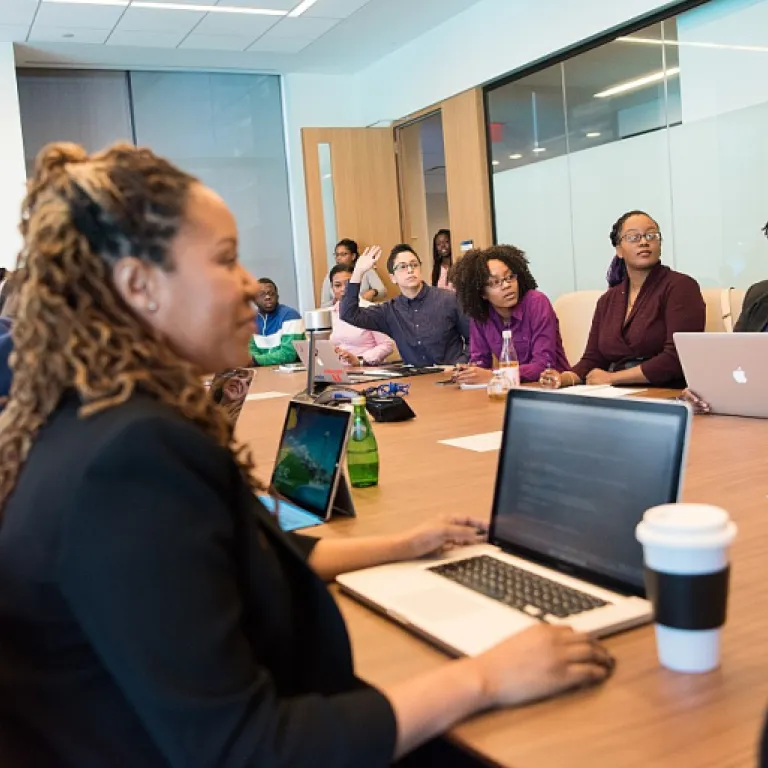
Building a robust recruitment process for consistent results
Organizations striving to improve their hiring process must first establish a recruitment process that is both structured and adaptable. A well-defined process ensures that hiring managers, recruiters, and internal teams are aligned on the requirements for each job, leading to better candidate matches and a higher quality of hire. Consistency in the recruitment process is essential for reducing unconscious bias and making fair hiring decisions. By leveraging applicant tracking systems (ATS), companies can automate communications, track candidates efficiently, and maintain a clear overview of the talent pipeline. This approach not only helps fill roles faster but also enhances the overall candidate experience by ensuring timely updates and feedback. A robust process also involves regular reviews of job descriptions to ensure they accurately reflect the skills and attributes needed for each position. When job descriptions are clear and targeted, they attract candidates who are genuinely suited to the role, improving the quality of applicants and reducing time to hire. Effective recruitment relies on collaboration between hiring managers and recruiters, ensuring that every step of the hiring process is tailored to the organization's needs and company culture. Integrating professional networks such as LinkedIn and utilizing job boards expands the reach of job postings, bringing in a diverse pool of candidates. Ultimately, a consistent and transparent recruitment process helps organizations build a strong employer brand and attract top talent for long-term success.
Leveraging technology and data to optimize hiring outcomes
Modern recruitment is increasingly driven by technology, with applicant tracking systems (ATS) and data analytics playing a pivotal role in improving the hiring process. These systems streamline the recruitment process by automating repetitive tasks, tracking applicants, and centralizing candidate information, making it easier for hiring managers to make informed hiring decisions. Data-driven recruitment enables organizations to identify the most effective channels for sourcing candidates, such as job boards, LinkedIn, and internal referrals, optimizing the allocation of resources. By analyzing metrics like time to hire, quality of hire, and candidate experience, companies can continuously refine their recruitment process for better outcomes. The integration of system ATS solutions also helps reduce unconscious bias by standardizing candidate evaluations and ensuring that all applicants are assessed fairly. As Dena F. Mujtaba notes, "Given the prevalence of AI-based recruitment, there is growing concern that human biases may carry over to decisions made by these systems, which can amplify the effect through systematic application." To address this, organizations must regularly audit their tracking systems and recruitment process to identify and mitigate any sources of bias. Leveraging technology not only helps fill positions more efficiently but also enhances the candidate experience by providing timely communication and feedback. For further insights on optimizing your recruitment process with technology, explore best practices for applicant tracking systems.
Crafting effective job descriptions and employer branding
Clear, compelling job descriptions are the foundation of an effective recruitment process. They set expectations for candidates and help hiring managers identify the skills and qualities needed for each role. Collaborating with internal teams and hiring managers to refine job descriptions ensures they accurately reflect the requirements and responsibilities of the job. This alignment reduces the risk of mismatches and improves the quality of hire. Job descriptions should focus on essential qualifications and avoid unnecessary requirements that may deter qualified candidates from applying. A retail organization, for example, revised its job descriptions to focus solely on core qualifications, resulting in a 25% increase in applications from underrepresented groups. Employer branding is equally important in attracting top talent. Showcasing company culture, values, and long-term opportunities through professional networks like LinkedIn and the organization's website helps build a positive reputation and attracts candidates who align with the company's mission. Consistent messaging across job boards, social media, and internal communications reinforces the organization's commitment to quality and inclusivity. For more strategies on crafting impactful job descriptions and building a strong employer brand, visit our comprehensive guide to employer branding. By investing in both job descriptions and employer branding, organizations can enhance their recruitment process and attract a diverse, high-quality talent pipeline.
Enhancing candidate experience and reducing time to hire
The candidate experience is a critical factor in the success of any hiring process. Clear communication, timely feedback, and a streamlined interview process help candidates feel valued and engaged throughout the recruitment process. Half of job seekers report that poor communication would cause them to withdraw from the recruitment process, highlighting the importance of regular updates and personalized interactions. Applicant tracking systems (ATS) can automate many aspects of candidate communication, ensuring that applicants receive timely responses and status updates. Structured interview processes, with standardized questions and evaluation criteria, promote fairness and consistency, reducing unconscious bias and improving the reliability of hiring decisions. A technology firm that implemented an ATS saw a 30% reduction in time to hire and improved candidate engagement, demonstrating the impact of efficient processes on both candidates and organizations. Providing a positive candidate experience not only helps fill positions more quickly but also enhances the organization's reputation, making it easier to attract top talent in the future. By prioritizing candidate experience and reducing time to hire, organizations can build a strong, long-term talent pipeline and achieve consistent hiring success.
Mitigating unconscious bias and promoting diversity in recruitment
Addressing unconscious bias is essential for creating a fair and inclusive hiring process. Structured interviews and standardized evaluation criteria help reduce the influence of unconscious bias by ensuring that all candidates are assessed based on the same factors. As Prasanna Parasurama observes, "Enforcing equal representation at the shortlist stage does not necessarily translate into more diverse final hires, even when there is no gender bias in the hiring stage." This highlights the need for organizations to examine every stage of the recruitment process, from job descriptions to final hiring decisions, to identify and address potential sources of bias. Training hiring managers and recruiters on recognizing and mitigating unconscious bias is a key step in promoting diversity and inclusion. Leveraging data from applicant tracking systems and recruitment process analytics can help organizations monitor diversity metrics and make informed adjustments to their hiring strategies. Building a diverse talent pipeline requires proactive outreach through job boards, professional networks, and internal referrals. By fostering an inclusive company culture and promoting diversity in recruitment, organizations can attract a broader range of candidates and enhance the quality of hire. Consistent efforts to reduce bias and promote diversity contribute to a stronger, more innovative team and support long-term organizational success.
Fostering collaboration and continuous improvement in hiring teams
Effective recruitment is a collaborative effort that involves hiring managers, recruiters, and internal stakeholders working together to achieve shared goals. Regular communication and feedback among team members ensure that the recruitment process remains aligned with the organization's needs and company culture. Utilizing applicant tracking systems and data analytics enables teams to monitor key metrics such as time to hire, quality of hire, and candidate experience, facilitating continuous improvement. Establishing clear roles and responsibilities within the hiring team helps streamline the recruitment process and ensures that resources are allocated efficiently. Encouraging input from diverse team members can help identify potential areas for improvement and foster innovation in recruitment strategies. Internal mobility programs and talent pipeline development initiatives support long-term organizational growth by enabling the company to fill roles with existing talent and reduce reliance on external hiring. Continuous training and development for hiring managers and recruiters help maintain high standards of professionalism and expertise in the recruitment process. By fostering a culture of collaboration and continuous improvement, organizations can achieve consistent, high-quality hiring outcomes and build a resilient, adaptable workforce.
Key statistics on improving the hiring process
- 61% of hiring managers believe recruiters have only a low to moderate understanding of the jobs they're recruiting for.
- 45% of employees who come from employee referrals stay longer than four years.
- 50% of job seekers said poor communication would cause them to voluntarily pull out of the recruitment process.
Frequently asked questions about improving the hiring process
How can organizations reduce unconscious bias in their recruitment process?
Organizations can reduce unconscious bias by implementing structured interviews, using standardized evaluation criteria, and providing training for hiring managers and recruiters. Leveraging applicant tracking systems and data analytics helps monitor diversity metrics and identify areas for improvement. Regularly reviewing job descriptions and recruitment strategies ensures that all candidates are assessed fairly and equitably.
What role does employer branding play in attracting top talent?
Employer branding showcases the organization's culture, values, and long-term opportunities, making it more attractive to top candidates. Consistent messaging across job boards, professional networks, and internal communications reinforces the company's reputation and helps build a strong talent pipeline. A positive employer brand reduces time to hire and improves the quality of applicants.












